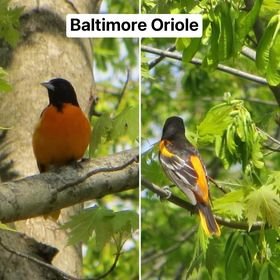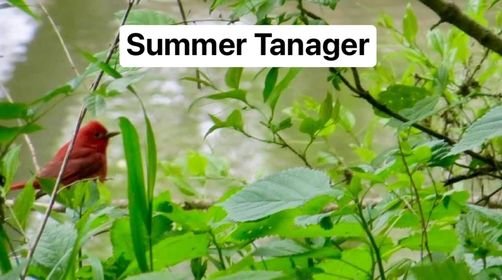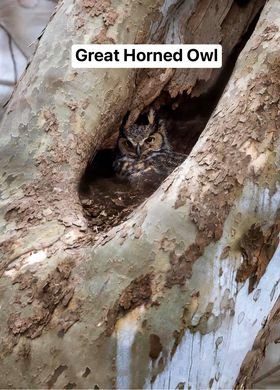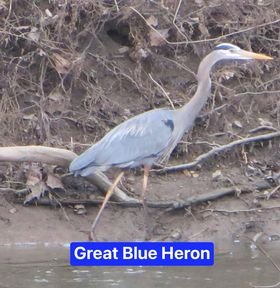A Birder’s Perspective
Guest Writer: Jared Skinner
It should be noted that I am no one of consequence or of any type of influence. I am just a birder. Someone who enjoys birdwatching. Everything written reflects my own personal opinion, observations and experience with Potter’s Bridge Park. I had already moved from Potter’s Woods before this gravel pit controversy erupted but I still come back regularly as I grew very fond of this park during my stay in the area. I often return to not only walk and enjoy the solitude of nature during the cold months but to observe and listen to the chorus of birds visiting the park during Spring migration.
Spring migration is a time when birds travel from their wintering grounds to their breeding grounds. Fall migration is the opposite when the birds will travel from breeding grounds back to their wintering grounds. Indiana’s skies are a major crossroads of sorts for the migration of birds. And this journey can span thousands of miles. Due to the park’s proximity to the White River, the maturing forest along it and the field located adjacent, Potter’s Woods Park acts as an ideal resting and refueling spot for many of these birds who will continue on with their journey further north during April and May.
I have walked all over that land. Up and down the river when it is low, onto the islands, through the woods and all over the fields as birds occupy all of these spaces. During that time, I personally have observed over 20 different warblers, Indigo Bunting, Rose-breasted Grosbeaks, Brown Thrasher, Ruby-crowned Kinglet, Golden-crowned Kinglet, Scarlet Tanager, Summer Tanager, various flycatchers, orioles, thrushes, vireos, sandpipers, plovers and more. The park is also home to birds that call the park home year-round. The obvious being Cardinals, Blue Jays, Nuthatches, Chickadees, Northern Flicker, Pileated, Red bellied, Hairy and Downy woodpeckers. Red-headed Woodpeckers return every Spring to nest in a standing dead tree along the field that I like to refer to as their summer condominium.
There are also Bald Eagles, Turkey Vultures, Osprey, Red-Tailed, Red-Shouldered, Coopers, Broad-winged Hawks. Great Blue Heron, Green Heron, Canada Goose, Mallards and Wood Duck. Barred, Eastern Screech and Great Horned Owl also make up the population.
The Great Horned is one of the more famous residents and observed by many guests over the years. Two years ago, it fled from its original nest next to the path during the pandemic as the foot traffic was too much stress for it to bare any offspring. It fled further inward toward the back of the woods where it offered more privacy and easy access to the field. The field offers a nice source of hunting ground for the Great Horned Owl who uses it to catch field mice. The field is also where you will find other migrants like Eastern Kingbirds, swallows, Field Sparrows and more. During the Fall migration, birds like Dark eyed Juncos and Brown Creepers will make their return to winter in the park.
If we are fortunate enough, some of these birds will stay for the summer and breed. Recently I have found there are a pair of Lark Sparrows in that field that I suspect will stay to breed. The Lark Sparrow is not an uncommon bird in the U.S. But it is an uncommon bird for this state as it is found to be in more western states than eastern. Indiana lies right on the edge of its breeding range. A very thin edge. The only known consistent breeding grounds in Indiana is up north around Kankakee Sands. So, it is significant to find this bird potentially breeding in this specific location.
Suffice it to say you can find over a 100 species of birds that use our small park during migration. I have birded it thoroughly enough to know this as a fact. For the city of Noblesville that is significant. This should be looked upon as something to highlight for our city. But I get it. Not everyone has an appreciation for birds. Yet, the birds make up an important part of Potter’s Woods ecosystem. The noise, air, and light pollution will cause detrimental harm to all of the birds in the park. Including the other animals. Furthermore, I cannot imagine a scenario where an artificial lake and town homes will not disrupt the ambience and fragile ecosystem of the park.
Again, I am no one of status. Just an observer of nature. When you spend a significant amount of time in nature you begin to see it in a different light. You begin to see its rhythm and flow and how it is all connected. Over time we have lost this connection and because of that nature has suffered at the expense of progress and modernity. And so, I would like to appeal to Mr. Beaver’s better inclinations in this matter by asking for some empathy and generosity. Empathy not only for the residents in the area opposing this project but for the animal residents who have no voice and are continuously pushed further and further into smaller green spaces. Generosity by gifting the land to Amos Butler Audubon Society as recompense for all of the land that has been damaged at his immense financial gain. And in conjunction with the Hamilton County Parks Department, label this area as a migratory bird sanctuary. In so doing this the parks department could expand the walking paths for everyone to enjoy a larger portion of the park and save the habitat for migratory birds and all animals for years to come.
Thank you.





